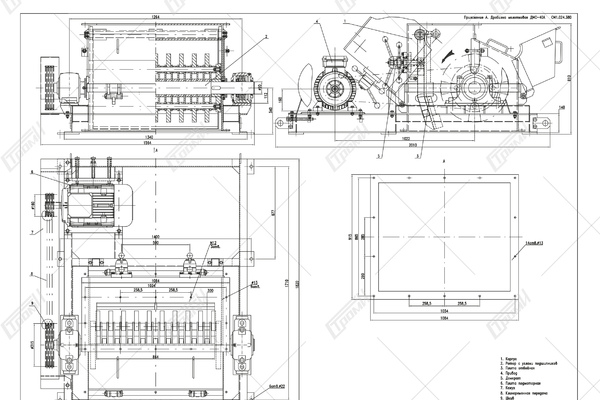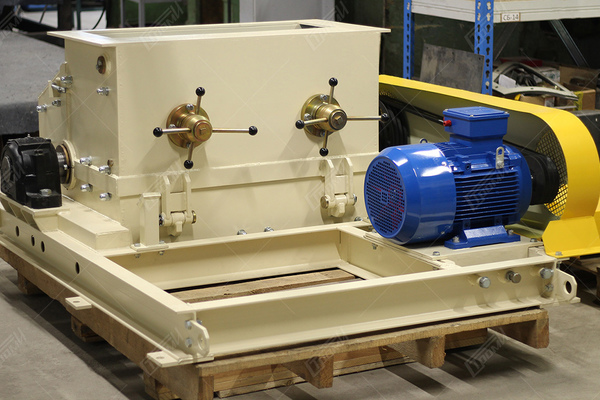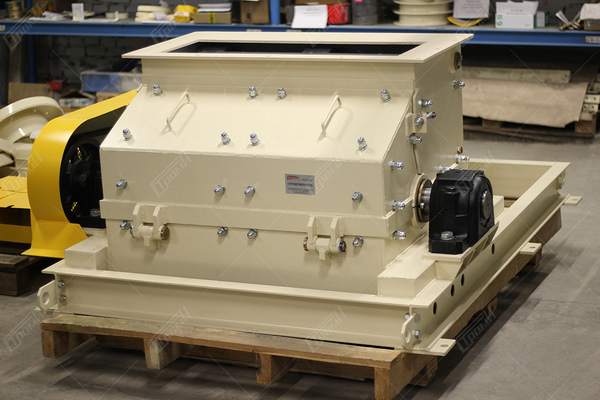Hammer crushers
Using and operation principle
Hammer-type crusher DMS-40А is designed for crushing of waste in the sheet glass or glassware production with sheet or wall thickness of maximum 12 mm, as well as for crushing of granulated glass mass with grain size of maximum 30 mm. The incoming material is fed through the loading flange of the crusher into the crusher body. When passing through the crusher body the material reaches the rotating hammers, partially breaks up and is thrown by the hammers to the impact plate. There are 2 beams on the plate which crush the material fully. Grain size of the material at the output depends on clearance between the hammers and the impact plate. The recommended rotation frequency of the rotor should be approximately from 470 to 735 rpm.
Design of the hammer-type crusher
The hammer-type crusher is a continuous-running device, the working element of which is a rotor with hingedly hung hammers. Main parts of the hammer-type crusher are: a body, a rotor, an impact plate, adjustable jacks, bearing units and a drive.
The body of the crusher consists of three parts, the lower of which is fixed and done as a whole with the carrying frame of the crusher, and two upper hinged halves can be opened for an easy access to the working element. The body walls are coated with sheets with abrasion-resistant surfacing.
The rotor with the bearing units consists of a shaft with discs fixed on it, axles in two mutually perpendicular planes pass through the discs. The hammers are so hingedly fixed on the axles that the material crushing is secured full-width of the loading gate. The distance between the discs is determined by distance bushings, put on the rotor shaft. The discs and distance bushings stack is tightened between two flanges, placed on edges of the stack. Rotational moment from the shaft to the flanges is transmitted by means of a key joint. Bearing units support the rotor. The units include two-row spherical roller bearings, having high load-carrying capacity. Felt seals are fixed in places where the rotor shaft comes out of the body in order to eliminate the glass scrap grains coming outwards.
The impact plate is hingedly fixed in the upper part of the body and is coated with plates of manganese wear-resisting steel. The distance between the impact plate and hammers is adjusted by means of two adjustable jacks. Rotating the adjusting handle of the jacks one can change the working clearance between the plate and hammers. In order to fix the plate in a certain position there are additional screws with smaller handles in the jacks. The impact plate has restricting lugs which exclude the contact of the hammers with the plate.
The rotary drive of the working element is an alternating current motor and a V-belt transmission. In order to tighten the belts the system has 2 bolts located on the crusher frame. To change the belts there is a draw bolt. For smooth start of the crusher and possibility to adjust the rate of rotation it is recommended to connect it through a frequency converter.
technical specifications
| Parameters | Values |
|---|---|
| Maximal capacity, tons/hour | 40 |
| Grain size of the crushed glass at the output of the crusher, mm | up to 30 |
| Nominal rotation frequency of the rotor, rpm | 735 |
| Adjustable clearance between the hammers and impact plate, mm | 10...40 |
| Number of hammers | 38 |
| Nominal power of the electric motor, kW | 11 |
| IP code of the electric motor | IP 55 |
| Voltage of AC power supply, V | 380 ± 38 |
| Overall dimensions (L х W х H), mm | 2010 x 1565 x 810 |
| Weight of the rotating parts, kg, max | 390 |
| Weight of the crusher, kg, max | 1900 |



